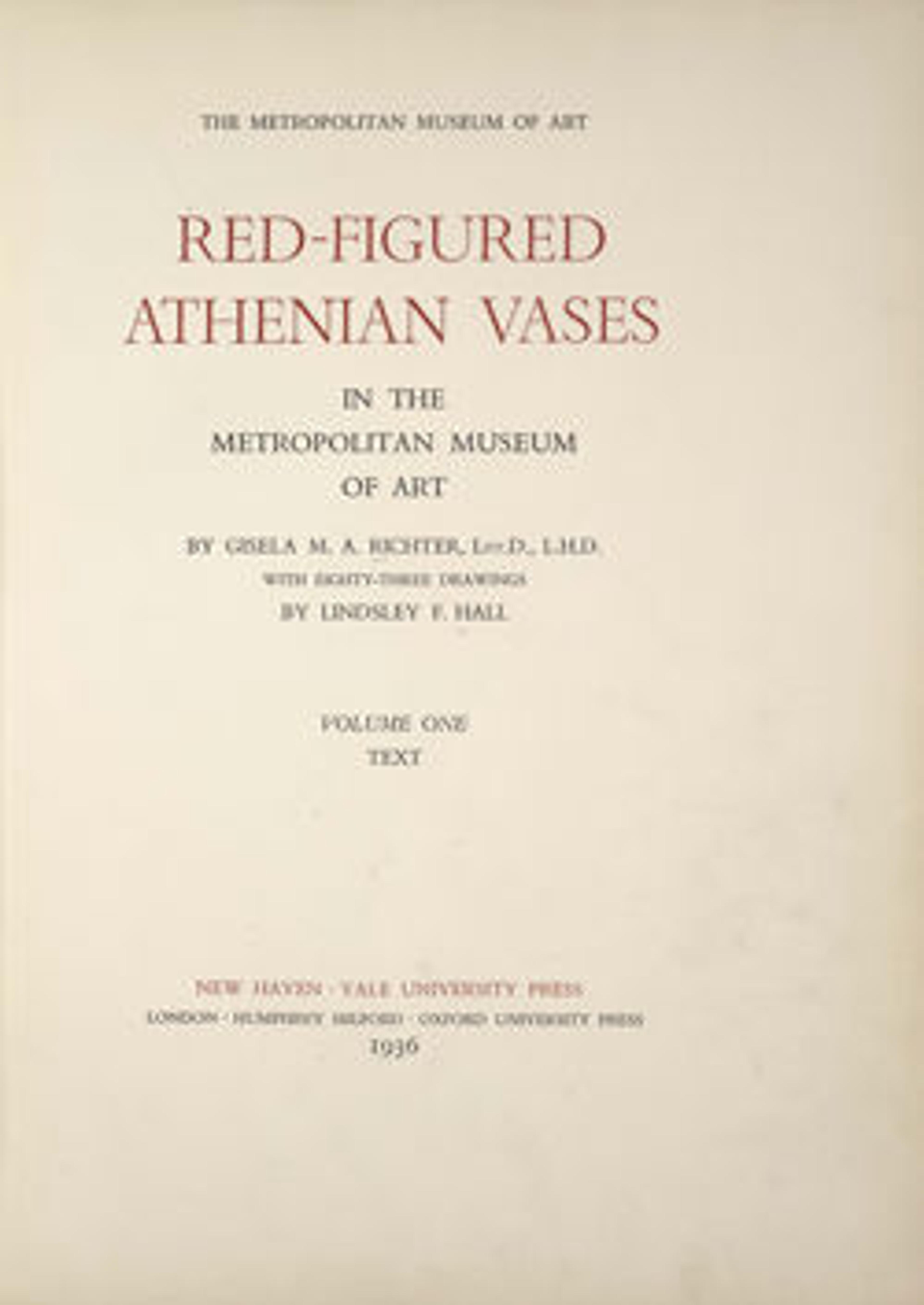Terracotta stamnos with cover (jar)
Obverse, King Akrisios watching his daughter Danae and her son Perseus who stand in a chest about to be set adrift
Reverse, Danae's seated mother, a standing servant with basket, and a carpenter holding a hammer
When King Akrisios of Argos was informed by an oracle that his grandson would kill him, he locked away his daughter Danaë. Nevertheless, Zeus came to her as a shower of gold and Perseus was born. The king had Danaë and Perseus put into a wooden chest and set adrift to die at sea. After many adventures, including his beheading of Medusa the Gorgon, Perseus returned to Argos and fulfilled the prophecy. Here in a quiet but tense moment, Danaë and the baby react with horror and pleading before the chest is closed.
Reverse, Danae's seated mother, a standing servant with basket, and a carpenter holding a hammer
When King Akrisios of Argos was informed by an oracle that his grandson would kill him, he locked away his daughter Danaë. Nevertheless, Zeus came to her as a shower of gold and Perseus was born. The king had Danaë and Perseus put into a wooden chest and set adrift to die at sea. After many adventures, including his beheading of Medusa the Gorgon, Perseus returned to Argos and fulfilled the prophecy. Here in a quiet but tense moment, Danaë and the baby react with horror and pleading before the chest is closed.
Artwork Details
- Title:Terracotta stamnos with cover (jar)
- Artist:Attributed to the Deepdene Painter
- Period:Classical
- Date:ca. 470–460 BCE
- Culture:Greek, Attic
- Medium:Terracotta; red-figure
- Dimensions:Overall: 15 x 15 3/8in. (38.1 x 39cm); diameter 12 3/8in. (31.4cm)
- Classification:Vases
- Credit Line:Rogers Fund, 1917
- Object Number:17.230.37a, b
- Curatorial Department: Greek and Roman Art
More Artwork
Research Resources
The Met provides unparalleled resources for research and welcomes an international community of students and scholars. The Met's Open Access API is where creators and researchers can connect to the The Met collection. Open Access data and public domain images are available for unrestricted commercial and noncommercial use without permission or fee.
To request images under copyright and other restrictions, please use this Image Request form.
Feedback
We continue to research and examine historical and cultural context for objects in The Met collection. If you have comments or questions about this object record, please contact us using the form below. The Museum looks forward to receiving your comments.
